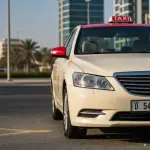Uber has announced a sweeping expansion of its autonomous vehicle strategy, revealing plans to roll out over 20,000 electric robotaxis globally over the next six years. The initiative, which will feature electric SUVs from Lucid Motors equipped with self-driving systems developed by Nuro, marks one of the largest robotaxi deployments to date.
This bold move strengthens Uber's growing position as a central platform in the autonomous transportation sector, blending zero-emission mobility with cutting-edge artificial intelligence.
A Web of Strategic Alliances
The robotaxi fleet announcement builds on a series of high-profile partnerships that Uber has formed in recent years. The company is already collaborating with Waymo, Alphabet’s autonomous vehicle unit, to operate robotaxis in several U.S. cities through the Uber app. Additionally, Volkswagen’s autonomous vehicles are expected to join the platform in the near future.
Uber is also expanding its reach in Asia, having entered into a new agreement with Chinese autonomous driving firm Momenta. The collaboration aims to bring Uber’s robotaxi services to markets beyond the U.S. and China, accelerating the company’s global autonomous footprint.
Autonomous Momentum in the Middle East
The Middle East is also making significant strides in autonomous mobility. In Dubai, the Roads and Transport Authority (RTA) signed a deal with Baidu’s Apollo Go to pilot 50 autonomous taxis, with a public launch targeted for 2026. Meanwhile, dnata — a global aviation services company — has begun operating a fleet of self-driving electric vehicles at Dubai World Central – Al Maktoum International Airport (DWC), aimed at automating ramp operations and enhancing ground handling efficiency.
Over in Qatar, autonomous transport is gaining traction at Hamad International Airport (DOH). A collaboration between Qatar Aviation Services (QAS), MATAR, and Qatar Science & Technology Park (QSTP) has launched pilot programs featuring autonomous staff buses and baggage tractors. These vehicles are outfitted with smart sensors, GPS, and AI systems, and are designed to operate 24/7 in various weather conditions.
The Road Ahead
Uber’s ambitious plan signals a pivotal moment in the race toward fully autonomous transportation. As cities worldwide embrace electric and self-driving technologies, the shift from human-driven vehicles to intelligent, self-navigating fleets is accelerating.
With one of the world’s largest robotaxi deployments in the pipeline and a growing network of international partnerships, Uber is positioning itself at the forefront of this mobility revolution—reshaping how people and goods move in the 21st century.










